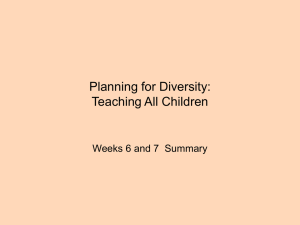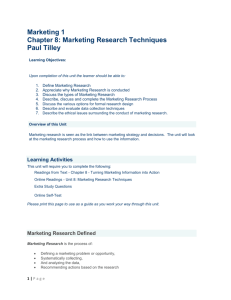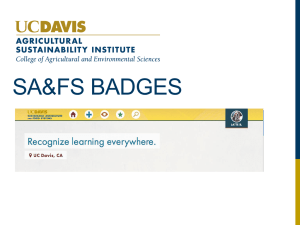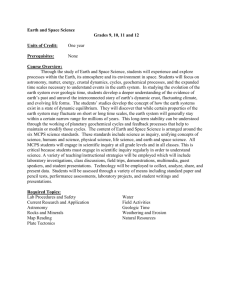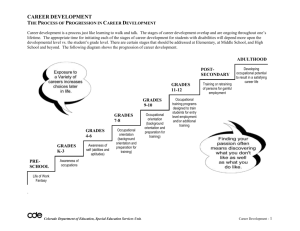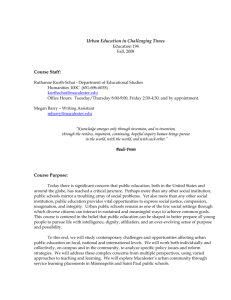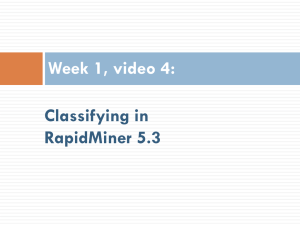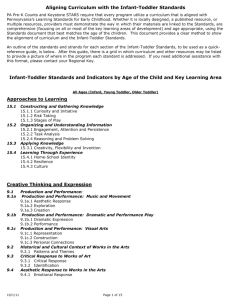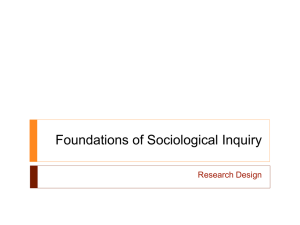Learning in action_4
advertisement
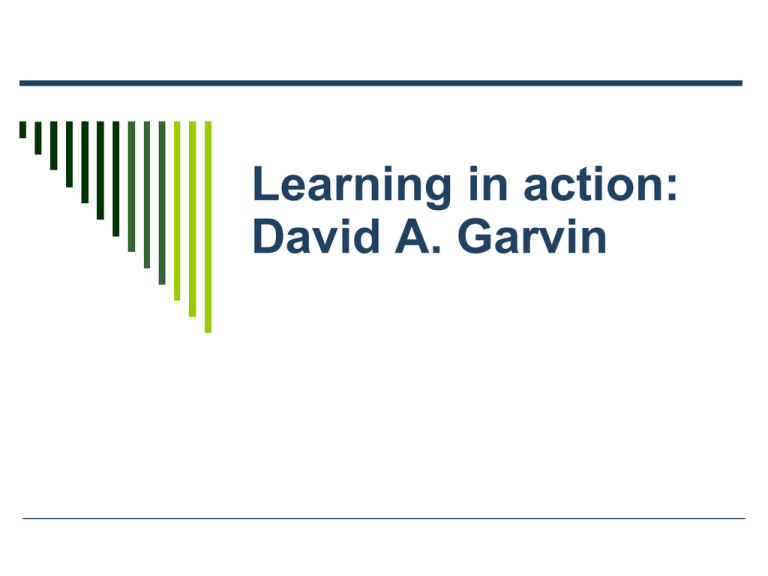
Learning in action: David A. Garvin Learning Definition Learning is a process that unfolds over time and link it with knowledge acquisition, deeper understanding and improved performance. Definition A learning organisation is an organisation skilled at creating, interpreting, acquiring, transferring and retaining knowledge and at modifying behaviour to reflect new knowledge and insight. Introduction How different organizations put different learning strategies to work The stages of learning, Types or modes of learning The leadership challenge The heart of organizational learning = a set of processes Design Deploy Lead How an organization learns? The stage of Learning Acquiring Knowledge Interpreting Knowledge Applying Knowledge Stage of learning What knowledge should we collect? How should it be obtained? Acquiring knowledge From where? By whom? • Understanding to allow new ideas to flourish • Distinguishing relevant and irrelevant information Separate “signal from noise” • Remaining open to unexpected and occasionally unwelcome Stage of learning What does the knowledge mean? Interpreting knowledge What categories should we apply? What are cause-andeffect relationships at work? - Test and Update continually - Reasonable rather than right Interpretation lies at the heart of decision making Stage of learning What new activities are appropriate? Applying knowledge What behaviors must be modified? How to generate a collective response by the organization? • Translating interpretation into concrete behavior • Hands-on experience is usually the best teacher Learning Disabilities Biased information Flawed interpretation Inaction Learning Disabilities Biased Information Blind spots “narrow or misdirected” Filtering “critical data are downplayed or ignored” Lack of information sharing Learning Disabilities Flawed interpretation Since the underlying processes are complex and poorly understood. Learning Disabilities Inaction An inability or unwillingness to act on new interpretations A problem of incentives and the frequent lack of support for new initiatives A certain level of self-awareness Espoused theories vs theories-in-use Supporting Learning Environment Recognize and Accept Differences Provide Timely Feedback Stimulate New Ideas Tolerate Errors and Mistakes Types of learning Intelligence gathering Experience Experimentation Types of learning Types of learning Intelligence gathering - Search Aim at The present Organizational knowledge Attend to currently available information and knowledge Learning methods - Search Inquiry Observation : Public sources or documents : Skill need : care analysis and research Inquiry : interviews / surveys : Skill need : framing and asking insightful questions Observation : direct contact with users : Skill need : attentive looking and listening Search Using information from diverse sources Cross-checking the findings Ensuring reliability Shifting smoothly between passive and active mode Devoting effort to analysis and interpretation Connecting with decision making Inquiry Providing choice of respondents Carefully framing questions Respondents as representative and appropriate 2 forms Descriptive Focus group and structured conversation Easy to summarize results Exploratory Using open-ended questions to elicit perceptions and needs Respondents on their minds Observation Carrying out in real context Acceptance of an observer Attentive looking and listening Suspending judgment and postpone analysis long as possible 2 approaches Passive observation To record experience for later review Participation and interaction To clarify and refine understanding Suitable technique Search matches with settings of published information. Inquiry suits to settings of identifying key sources. Observation suits to settings of gaining insights by watching people. Combination of them provides intelligence of the highest order. Types of learning Types of learning Experience Aim at The past Organizational knowledge Learning methods Draw lessons from activities Reflection and that have already taken place review • • Single case or comparison reviews Individual, group, or organizational reviews Experiential learning • Learning and experience curve Two distinct ways of experience Repetition Efficiently performing the same tasks over time Exposure Getting a new set of talent Added skill by the exploration of unfamiliar engagement Learning and experience curves Reflection and review Focusing on problem / success Taking time to reflect on experiences and developing lessons for the future Reflection and review processes are weak due to late in game. After-the-fact reviews as alternating periods of learning and doing Focusing on tangible and result-oriented programs Types of learning Types of learning Experimentation Aim at Organizational knowledge The future Look ahead, trying out new designs or theories to test their validity Learning methods - Exploration Hypothesis testing Experimentation Try-it-and –see approach Knowledge as provisional and conclusions as tentative Designed activities to generate knowledge Types of experiments Exploratory experiments To see what would happen if Hypothesis-testing experiments To discriminate among alternative explanations and confirm prevailing views Exploration Lack of information leading to difficult to identity solution Probe-and-learn process 4 elements such as a starting point, one or more feedback loops, a process for rapid redesign and a stopping rule Demonstration projects On-line experiments Large scale simulation Hypothesis testing Deductive rather than inductive Disciplined rather than playful Targeted rather than open-end Generating data, validating theories, and ensuring new ideas to be accepted Conducting experiments Be clear about the purpose of the experiments Begin with a hypothesis in mind Ensure that all needed measures (pretest and posttest) are in place Reproduce real-world conditions as closely as possible Manipulate a single variable at a time Use comparison groups or other natural controls Involve diverse, complementary observers Search for distinctive patterns Employ multiple, repeated trials The leadership challenge Creating opportunity Setting the tone Leading the discussion Leading learning Methods that leaders use to work with people of an organization moving in the desired direction. Learning forums Creating the opportunity Exploratory assignments Shared experiences Challenge and dissent Leading learning Setting the tone Security and support Open communication Questioning Leading the discussion Listening Responding

